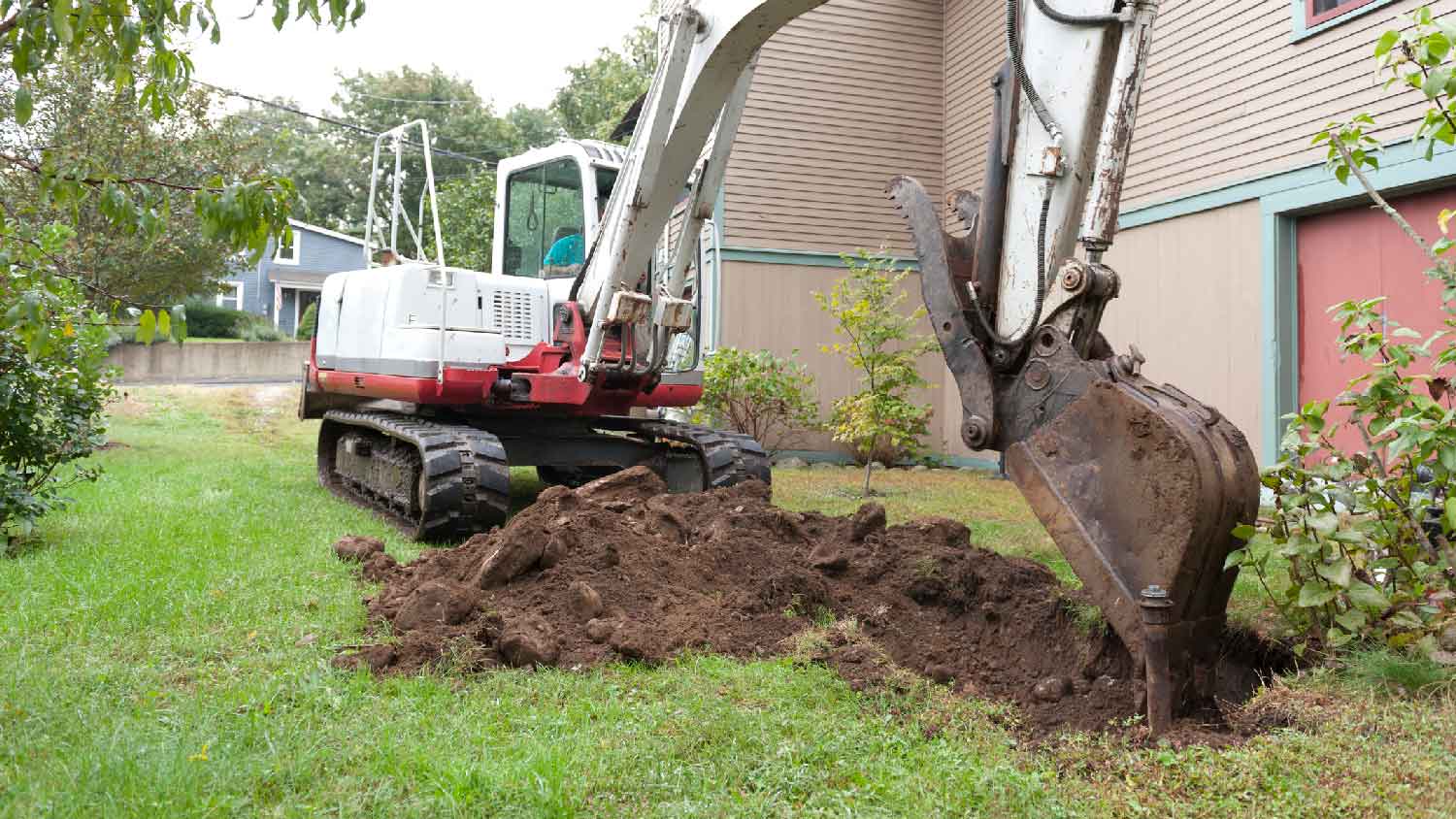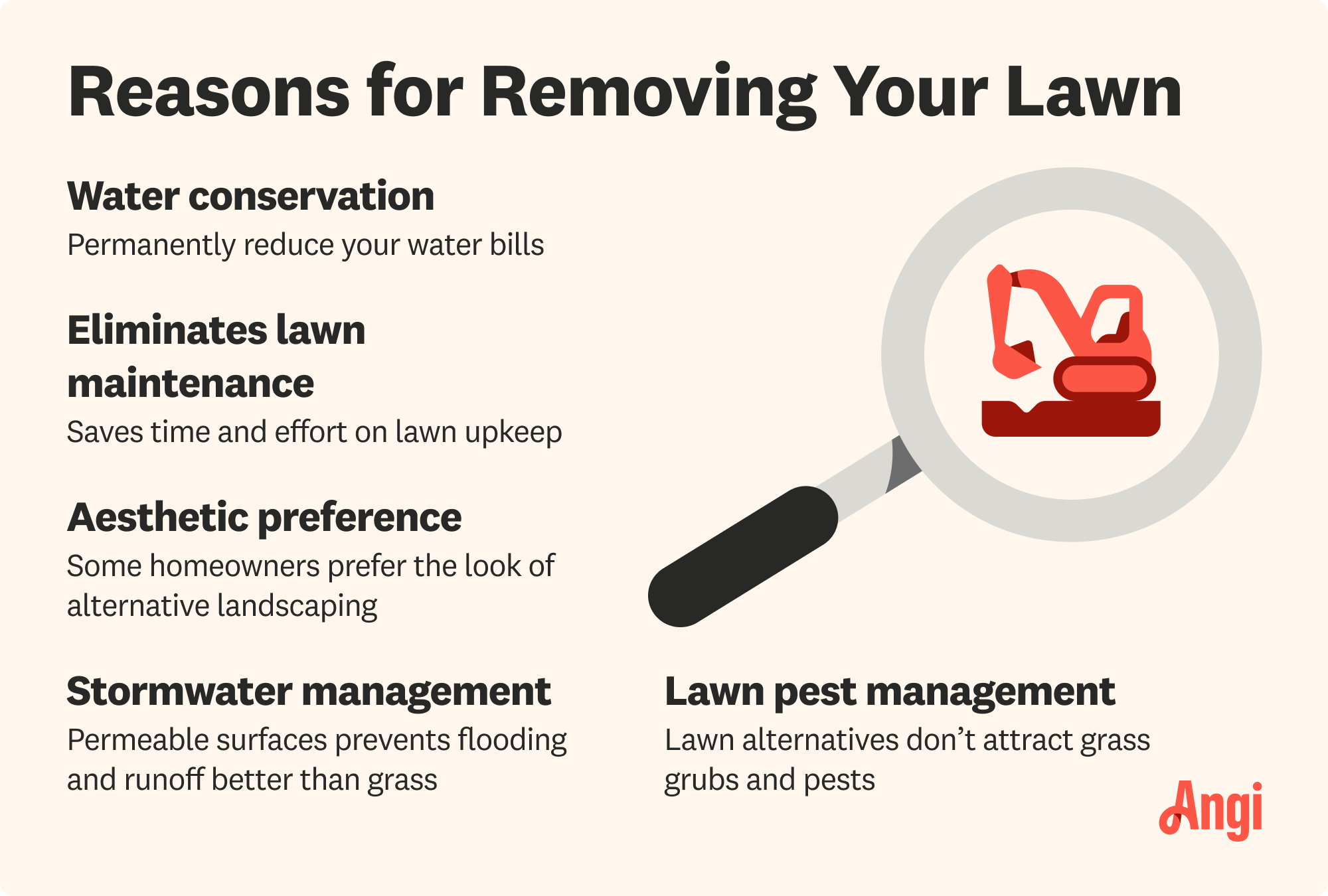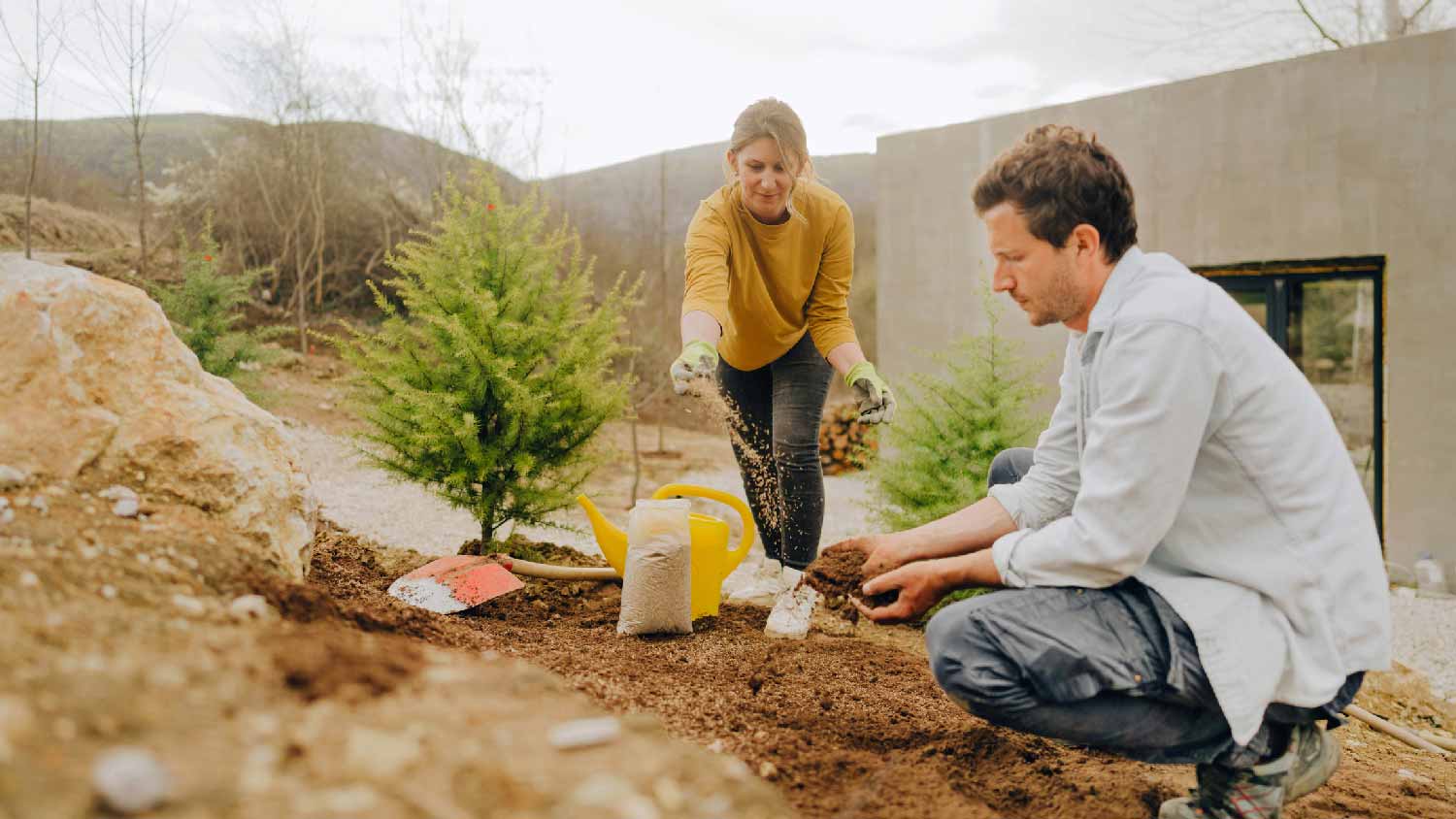
Your total lawn care cost depends on several factors, including the type of service and lawn size. Our guide will cover what you can expect to pay for lawn care.
Find out what to budget for your lawn removal cost


The average lawn removal cost is $1.50 per square foot. The price for this lawn task can range between $1 per square foot and $3 per square foot based on labor costs, additional land prep, and whether you replace the grass afterward. You can expect to pay $250 and $10,000 to remove between 500 and 5,000 square feet of lawn.
Grass removal alone costs $0.50 per square foot on average, while replacing the lawn with new sod can take costs up to $4 per square foot. To get an accurate estimate for your lawn removal project, consult a lawn care professional near you.
Great experience from start to finish. They responded to my inquiry quickly and came out to give me a quote the same day. My yard was overgrown with weeds and needed lots of trimming. The guys came out and pulled all of the weeds by hand to get them out by the roots and trimmed up nicely. They were able to come up with a treatment plan within my budget to get my lawn and yard looking great again. Very professional, efficient and knowledgeable.
The type of job and yard size will have a major impact on your lawn removal costs, plus any necessary prep or cleanup. Check out the main factors that impact the cost of lawn removal.
Your lawn removal cost depends on how you’ll be finishing the land: Will you leave it as is, plant new grass seeds, or lay a fresh layer of sod? Consider these average costs when planning your budget.
| Job Type | Average Cost per Square Foot |
|---|---|
| Remove sod | $0.50–$2 |
| Remove sod and reseed lawn | $1–$3 |
| Remove sod and lay new sod | $1.50–$4 |
Yard size is the biggest factor that affects your lawn removal cost. Removing only a few hundred square feet is relatively affordable, while prices for a whole acre can be costly. Likewise, adding a new lawn will add significant extra costs.
| Yard Size in Square Feet and Acreage | Average Cost (Sod Removal Only) | Average Cost (Plus Reseeding/Resodding) |
|---|---|---|
| 100 | $50–$200 | $100–$400 |
| 300 | $150–$600 | $300–$1,200 |
| 500 | $250–$1,000 | $500–$2,000 |
| 1,000 | $500–$2,000 | $1,000–$4,000 |
| 5,000 | $2,500–$10,000 | $5,000–$20,000 |
| 1/4 acre | $5,500–$22,000 | $11,000–$43,600 |
| 1/2 acre | $10,900–$43,600 | $21,800–$87,200 |
| 1 acre | $21,800–$87,200 | $43,600–$174,300 |

The labor and equipment to remove a lawn will cost around $0.50 to $2 per square foot. If you’re only removing sod, labor charges will be the only cost for the entire project. However, reseeding or resodding afterwards can add another $0.50 to $2 per square foot to your lawn removal cost.
If you need to do additional land prep beforehand, this task will add to your lawn removal cost. For example, the cost to clear land is $500 to $5,600 per acre, or roughly $0.02 to $0.13 per square foot. If you need to correct a slope, the cost of leveling a yard is $1 to $2 per square foot, or up to $45,000 per acre.
Disposal of the old sod typically costs around $0.25 to $0.50 per square foot. Most landscapers will factor this into your total lawn removal cost, but be sure to confirm with your lawn care team ahead of the service.

Your ongoing expenses following lawn removal will depend on what you do with the land afterward. For instance, if you plant a new lawn, you may want to consider the cost of having your lawn mowed regularly to help keep up with maintenance. On the other hand, if you’re planning a more elaborate landscape design with trees to maintain or hedges to trim, regular landscaping services cost between $1,300 and $2,100 on average.
Learning how to remove grass can be tough work, but it will save significantly on your lawn removal cost. The easiest way to DIY this project is to rent a sod cutter for around $80 per day. Alternatively, you can dig the old sod up with a shovel, but this will be far more labor-intensive to pull off.
You may also need to factor in the cost to rent a dumper for yard waste, which averages between $300 and $500 per week. Alternatively, you can dispose of old sod through your community’s yard waste pickup program—30-gallon bags are typically $2 to $4 for a 5-pack. Be sure to familiarize yourself with local pickup policies, as they will typically impose limits on the number of bags you can leave out at a time.
However, DIY lawn removal is only recommended for small areas of land. It’s time- and labor-intensive work, and mistakes made in your yard can be costly and difficult to remedy. To guarantee high-quality results, hire a local lawn care team that can create and implement a game plan for removing your current lawn and replacing it.

Once you start fresh with a clean plot of land, you may want to prepare it for a new, healthy lawn or build a new structure. Here are a few common add-ons to consider for this project:
Lawn fertilization cost: $0.02–$0.08 per square feet
Lawn aeration cost: $80–$175
New sprinkler system cost: $1,700–$3,600
Mulch costs: $30–$120 per cubic yard
Soil testing costs: $20–$100
New topsoil costs: $12–$55 per cubic yard
Artificial turf costs: $2–$8 per square foot
Cost to build a deck: $30–$60 per square foot
Concrete patio cost: $1,800–$4,900
Lawn removal costs can get expensive, but there are a few ways to save. Follow these cost-saving tips:
Compare quotes from at least three landscaping services to find the best deal.
When choosing between sod versus seed, opt for reseeding your lawn to save money.
Instead of replacing the lawn with another grass lawn, consider low-maintenance lawn alternatives such as xeriscaping or native plants.
Consider removing your own yard waste to save on cleanup costs.
If you're replacing the lawn with a new landscape feature, such as a garden or patio, consider doing the planting or installation yourself to save on labor costs.
Home is the most important place on earth, which is why Angi has helped more than 150 million homeowners transform their houses into homes they adore. To help homeowners with their next project, Angi provides readers with the most accurate cost data and upholds strict editorial standards. We extensively research project costs to develop the pricing data you see, so you can make the best decisions for you and your home. We rely on reputable sources, including the U.S. Bureau of Labor Statistics, academic journals, market studies, and interviews with industry experts—all to ensure our prices reflect real-world projects.
Want to help us improve our cost data? Send us a recent project quote to [email protected]. Quotes and personal information will not be shared publicly.
From average costs to expert advice, get all the answers you need to get your job done.

Your total lawn care cost depends on several factors, including the type of service and lawn size. Our guide will cover what you can expect to pay for lawn care.

The cost to reseed a lawn can vary depending on the size of your yard and the condition of the soil. We’ll help you figure out the true cost of reseeding or overseeding your lawn, along with whether or not you should hire a professional.

Lawn aeration costs fall between $100 and $350 on average, but prices vary by aeration method, lawn size, and more. Here’s what you need to know.

Dethatching can help keep your lawn healthy, but it also comes with potential drawbacks. Learn more about the pros and cons of dethatching your lawn.

Dreaming of a lush lawn but don’t want to wait for seed to grow? Use these sod questions to prep yourself for an easy and stress-free installation.

Will grass seed germinate on top of soil? Yes, and it’s the ideal way to start a new lawn. Find out how (and why) to plant grass seeds on top of soil.